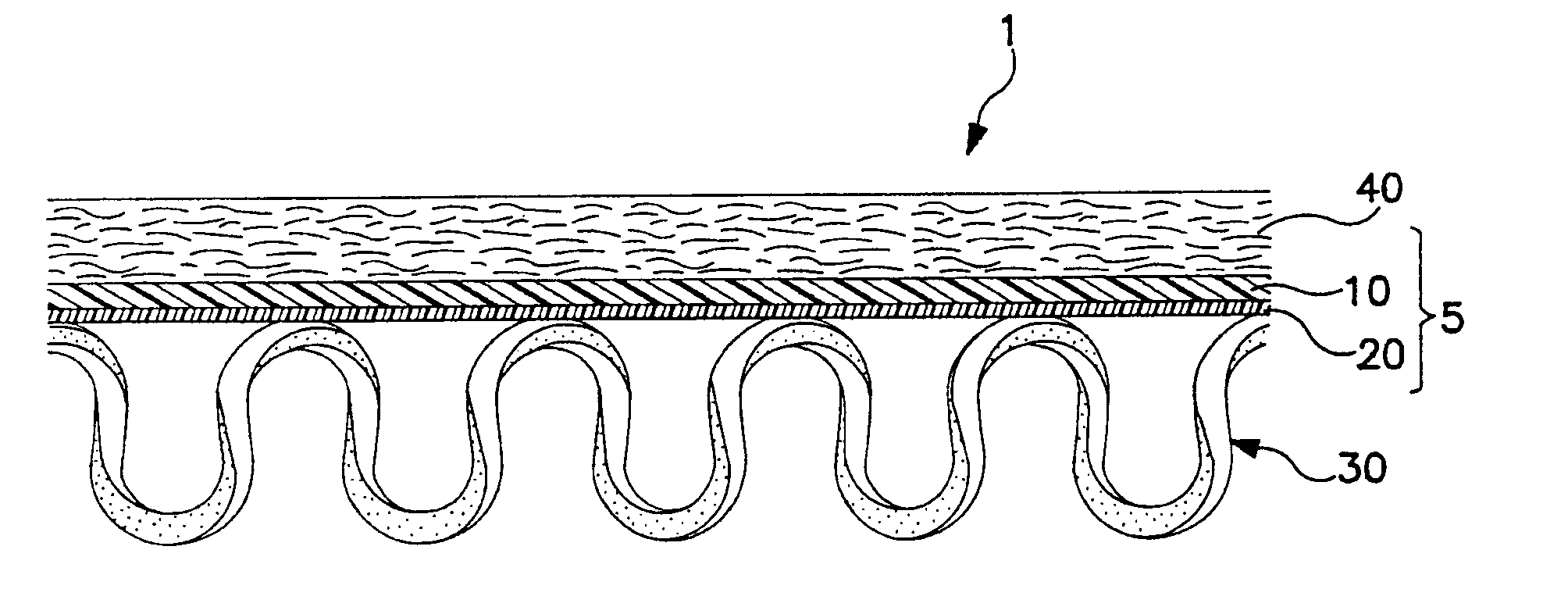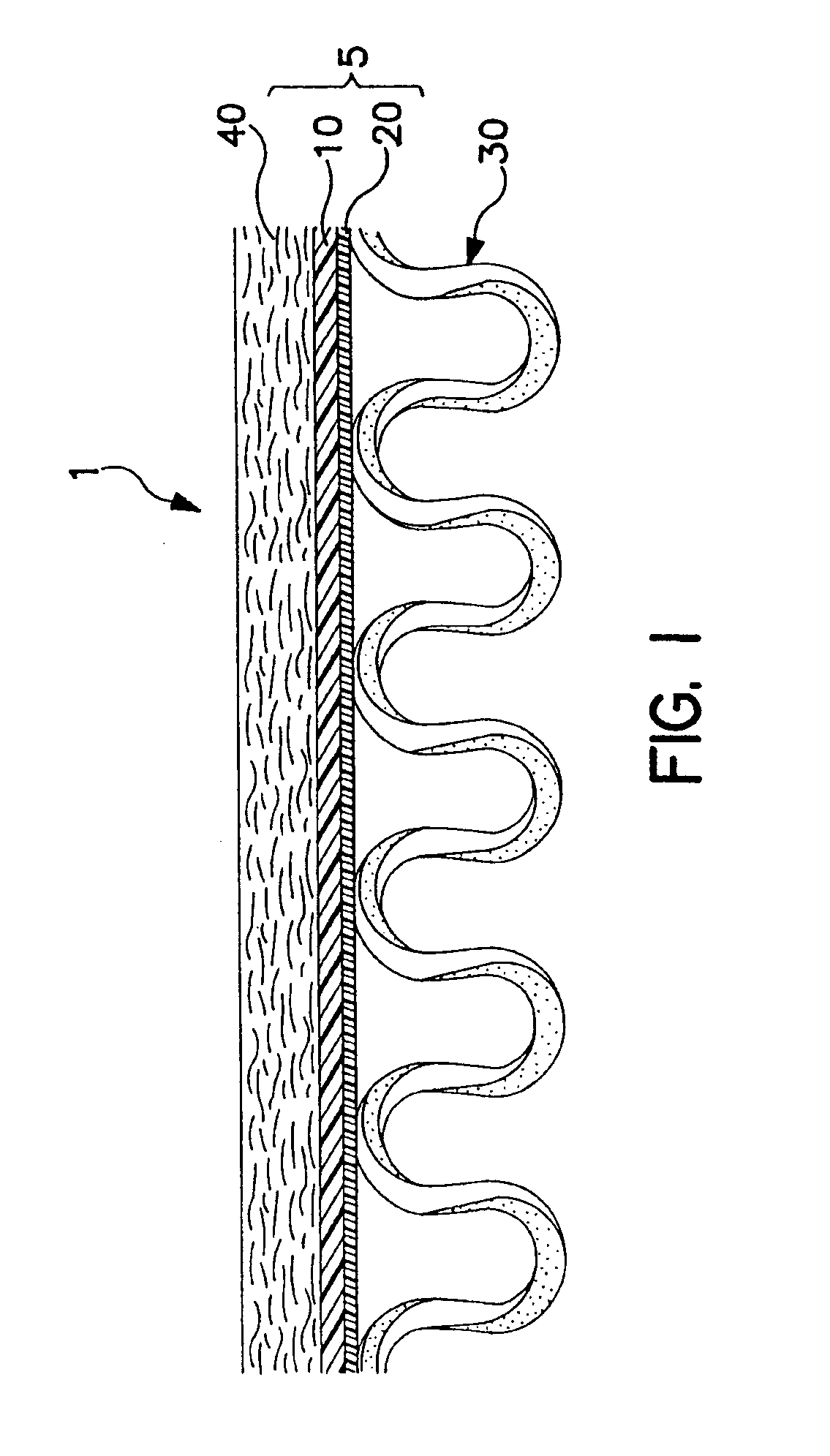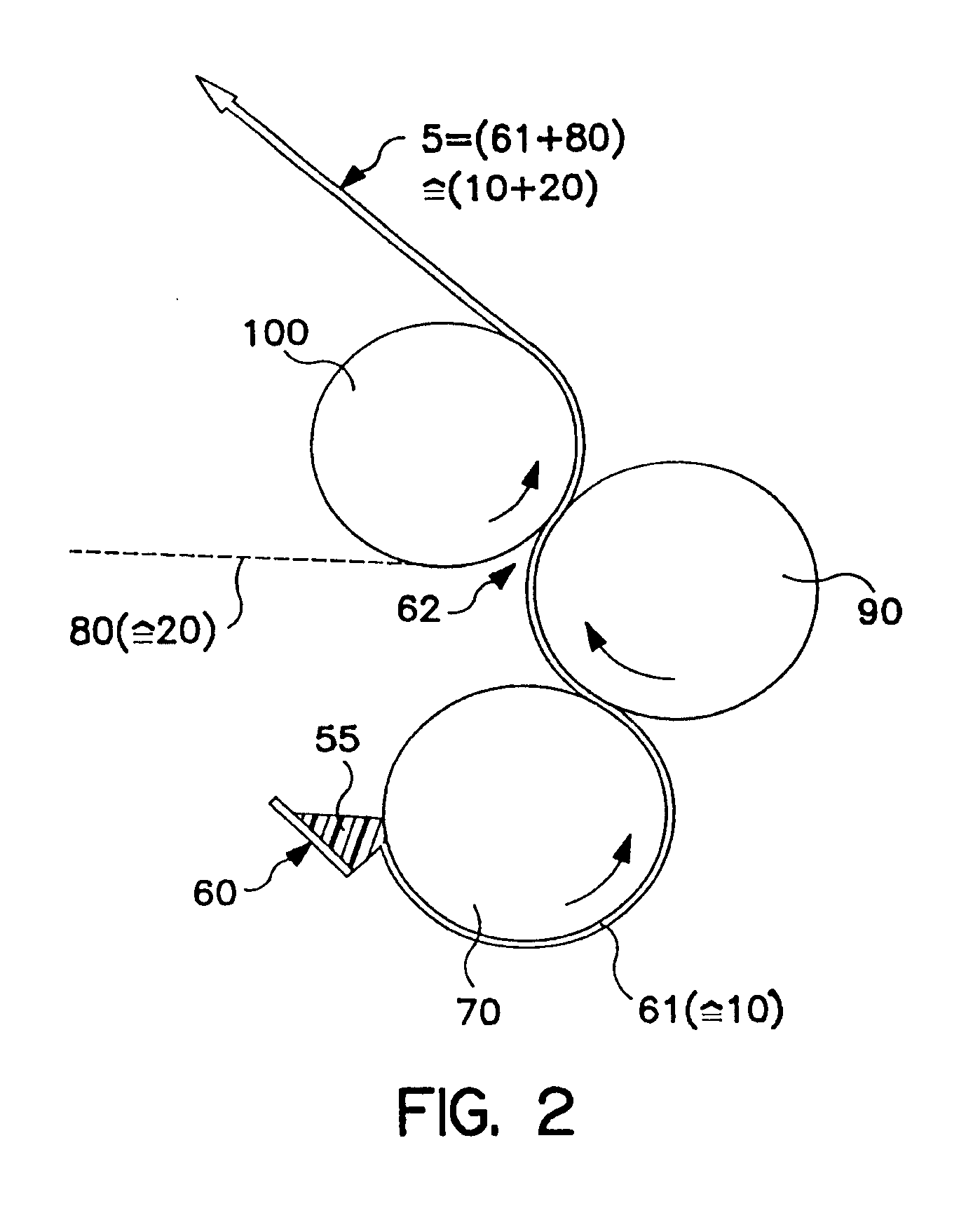Seam joining a waterproof laminate with textile layer made of multi-component yarns
a multi-component yarn and waterproof laminate technology, applied in the field of seam joining a waterproof laminate with a textile layer made of multi-component yarn, can solve the problems of stiff seam being formed between the two fabric pieces, the seam being strong, and the effect of uncomfortable discomfor
- Summary
- Abstract
- Description
- Claims
- Application Information
AI Technical Summary
Benefits of technology
Problems solved by technology
Method used
Image
Examples
example 1
A 0.8 osy polyethylene (PE) / polyamide (PA) sheath-core spun-bonded bi-component non-woven layer 30 was laminated to a waterproof breathable composite layer 5 consisting of a polyurethane coated ePTFE membrane 10 using the lamination method described above. The bi-component layer 30 was produced by Kimberly-Clark in Roswell, Ga., USA, and is described in U.S. Pat. No. 5,662,978. The bi-component layer 30 sides of the two pieces of textile laminates 1 are joined together using the Theller Hot Tack Seal Strength Tester. The heat sealing die was 12.7 by 133 mm and the actual footprint used was 12 mm by 131 mm. The top and bottom dies were heated to a temperature of 135.degree. C. and a 5 sec. dwell was used at a pressure of 300 psi.
example 2
A 20 g / m.sup.2 polyethylene (PE) / polyethylene terephthalate (PET) sheath-core spun-bonded bi-component non-woven layer 30 was laminated to a waterproof breathable composite layer 5 consisting a polyurethane coated ePTFE membrane 10 using the lamination described above to form a textile laminates 1. The bi-component layer 30 was produced by Unitika in Osaka, Japan, and is sold under the brand name ELEVES. The bi-component layer sides of two pieces of textile laminates 1 are joined together using the Theller Hot Tack Seal Strength Tester. The heat sealing die was 12.7 by 133 mm and the actual footprint used measured was 12 mm by 131 mm. The top and bottom dies were and a 5 sec. dwell was used at a pressure of 300 psi.
example 3
A 0.8 osy. polypropylene (PP) / polyethylene terephthalate (PET) sheath-core carded bi-component non-woven layer 30 was laminated to a waterproof breathable composite layer 5 consisting a polyurethane coated ePTFE membrane 10 using the lamination described above to form a textile laminates 1. The bi-component layer 30 was produced by HDK Industries, Inc., in Rogersville, Tenn., USA, and is sold under part number D1640. The bi-component layer sides of two pieces of textile laminates 1 are joined together using the Theller Hot Tack Seal Strength Tester. The heat sealing die was 12.7 by 133 mm and the actual footprint used measured was 12 mm by 131 mm. The top and bottom dies were heated to a temperature of 165.degree. C. and a 5 sec. dwell time was used at a pressure of 300 psi.
PUM
| Property | Measurement | Unit |
|---|---|---|
| water entry pressure | aaaaa | aaaaa |
| water entry pressure | aaaaa | aaaaa |
| shrinkage | aaaaa | aaaaa |
Abstract
Description
Claims
Application Information
 Login to View More
Login to View More - R&D
- Intellectual Property
- Life Sciences
- Materials
- Tech Scout
- Unparalleled Data Quality
- Higher Quality Content
- 60% Fewer Hallucinations
Browse by: Latest US Patents, China's latest patents, Technical Efficacy Thesaurus, Application Domain, Technology Topic, Popular Technical Reports.
© 2025 PatSnap. All rights reserved.Legal|Privacy policy|Modern Slavery Act Transparency Statement|Sitemap|About US| Contact US: help@patsnap.com



